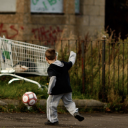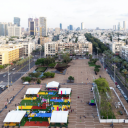


Australia: ‘Bush kinder’ turns nature novices into eco-experts
Studies show that children are drawn to nature and intrigued by the world around them. There are myriad benefits from playing and learning in nature.Read more
In Barranquilla, Colombia, urban parks revitalize a declining city
Samira Perez, a longtime resident of Barranquilla, Colombia used to spend her time and money on taxis to take her children to local shopping malls after school and on the weekends. There, they would pass...Read more
Putting Melbourne’s on-street parking ‘undercover’ would mean a more child-friendly city
The streets of Melbourne could be made significantly more child-friendly if large swathes of on-street parking spaces were moved underground.Read more
Navigating the Nexus: A brighter future for children in urban contexts in Lebanon
Two billion people live in countries where development outcomes are deeply affected by fragility, conflict and violence, and which are some of the most dangerous places in the world to be a child.Read more
Growing up in a disadvantaged neighbourhood can change kids’ brains – and their reactions
Understanding the facial expressions of others is an important development stage. It helps us learn non-verbal communication and to recognise when someone is angry or scared and primes us to react to threats or show...Read more
How air pollution, green space and the ‘built environment’ may shape a child’s body mass index
Exposure to higher air pollution levels and greater population density during the early months of life may be associated with an increase in children’s body mass index (BMI).Read more
World Vision report on COVID-19 and the risks to children in urban contexts
National governments must give municipalities the financial and technical support needed to help protect vulnerable children living in cities worldwide from the far-reaching effects of COVID-19.Read more

Huge inequalities in neighbourhood ‘chances’ for US children
America’s urban districts have a ‘sharp racial divide’ in the life chances given to children depending on their colour and race. That’s the conclusion of researchers at Brandeis University in Boston, one of the leading research...Read more

